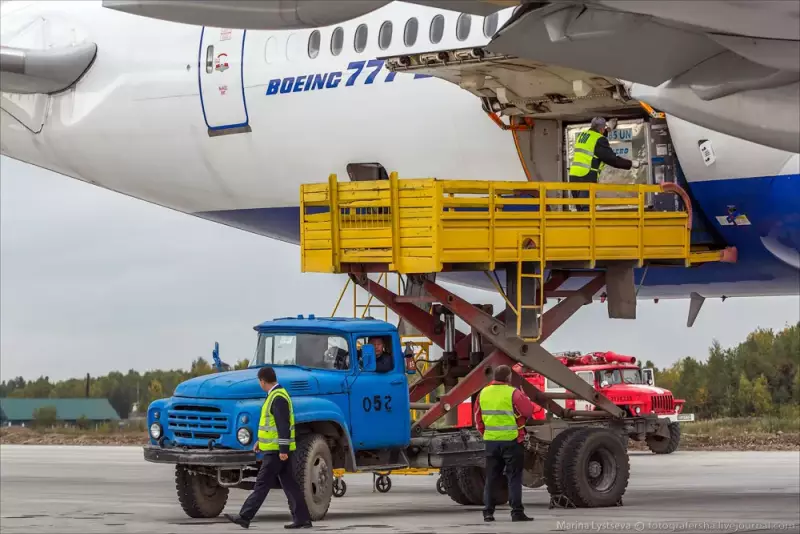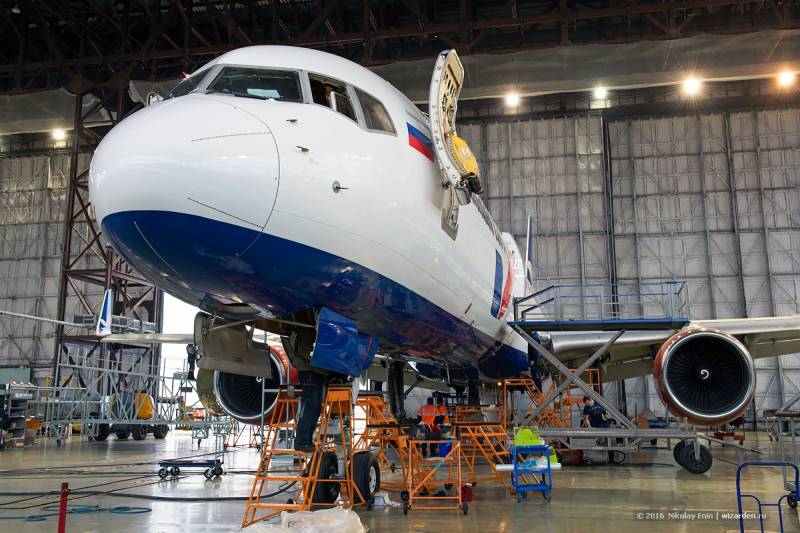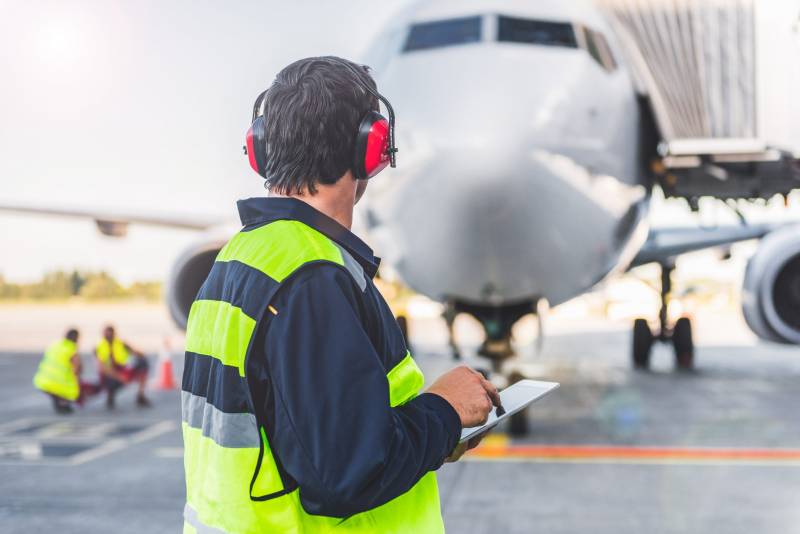Wings in Iranian style: the new reality of the Russian air fleet

Source: lega-tour.ru
Critical industry
February was marked by another change in the rules for the operation of civil aircraft. Rostransnadzor supported the idea of carriers to extend the terms of maintenance of imported aircraft. This happened not because of the growth in the quality of Western aircraft and high reliability, but because of the banal lack of consumables and spare parts. Carriers have to spend more time and money to maintain the "combat readiness" of civilian equipment. Due to Western sanctions, difficulties with access to repair documentation, repair equipment and with the implementation of airworthiness directives have not yet been resolved. Marat Tereshchenko, adviser to the technical director of Aeroflot, announced the decision of the supervisory agency on February 13, and he separately specified that each fact of extending the service period would be considered by a board of several departments.
Maintaining the airworthiness of a passenger aircraft is the observance of a mass of strictly regulated procedures and rules. There are at least six types of maintenance of winged equipment or, in aviation, "checks" (Check). The aircraft is checked for at least three hours before each flight (Transit Check), after 24 hours (Daily Check), once a week (Weekly Check) and so on. The Russian aviation industry has been under Western sanctions for almost a year, which seriously complicates the maintenance of equipment. Someone puts planes on hold, someone uses old stocks of consumables and assemblies. Since then, every aircraft in Russian jurisdiction had to pass a B-check at least once - this is a long MOT for a couple of days in a special hangar. Labor costs up to 180 man-hours. Ahead of the operated aircraft is the C-check, according to the regulations of which the aircraft is absent from flights for a month and a half and requires 6000 man-hours.

Source: 32.livejournal.com
And, finally, almost to the screw, the plane is disassembled once every six to ten years. Of course, the deeper the check, the more spare parts the aircraft will require. Rostransnadzor extended the service interval for Western aircraft for an unspecified period. Here, an explanation is needed regarding flight safety in the new conditions. The fact is that aircraft manufacturers and carriers repeatedly reinsure themselves at the expense of the technical condition of civil aircraft. If a passenger airliner crashes to the ground and takes several hundred lives with it, reputational losses can ruin the entire aviation business of both the manufacturer and the operator. That is why in recent decades, technical reasons are less and less likely to lead to air crashes - the human factor is in the first positions. Moreover, both in ground services and in the cockpit. Therefore, a slight increase in service intervals will not critically affect the reliability of aircraft. Where there was a conditionally five-fold margin of safety, there will be a three-four-fold one. However, this is only in the first few years. If the situation with sanctions does not change, sooner or later Russia will face the notorious “Iranian scenario”, which will have to get out of its own way.
"Iranian scenario"
What will happen if the country is excommunicated from imported aircraft and spare parts for them? If we take the Soviet Union as an example, then nothing critical - the domestic aviation industry was once completely autonomous. What can not be said about the rebellious Iran, which has been flying for several decades on frank junk, buying decommissioned Western aircraft through third or fourth hands. Most of the aircraft are already 20-30 years old. The Iranians have never had their own aircraft industry, unlike the Russians, and in general it is unlikely that they will ever appear. But the Iranian authorities have learned to circumvent Western prohibitions. As the famous aphorism says:
So spare parts and consumables for aircraft are flowing to Iran. They flow slowly and through many filters, but they flow. They have learned to do something on their own and are ready to share it with the Russians. Last summer, the Islamic Republic signed a memorandum on the supply of aircraft parts to Russia. In short, Tehran reveals to our country for years a well-established scheme for the supply of scarce products through shadow channels. Of course, the new Rolls-Royce aircraft engine cannot be delivered this way, but non-critical components are quite affordable. The Iranians say that they either manufacture up to 70-80 percent of the entire component base on their own or receive it through “shadow schemes”. It is possible to keep fifteen national airlines afloat at once, and in 2020 Tehran imported 22 Airbuses in a roundabout way. Some machines were immediately dismantled for parts, but most of them work in the sky.
Naturally, some of the components coming to Iran do not have certificates, and sometimes they are assembled using bypass technologies. Such products may already pose a risk to air travel. At the same time, statistics aviation accidents and disasters says that the Iranians are still coping with import substitution. In recent years, the Islamic Republic has not been on the first lines of any anti-rating of air crashes. The last time the plane crashed with casualties in 2018 was ATR 72-212, and then 65 people died. Two years later, the Iranians mistakenly shot down a Ukrainian airliner, but, of course, this tragedy was not included in any air travel reliability rating. Russia, in 2021 alone, lost 77 people in various incidents and accidents. And it was a “covid” year, when the intensity of flights decreased markedly. In 2022, the accident rate in the industry has become less, but only due to a decrease in the number of flights. For decades, our country cannot get out of the sad trio of countries with the highest losses from air crashes. In addition to Russia, the leaders are the USA and Canada, but they also fly many times more. Just open the Flightradar24 app to see the difference. In general, when experts are very skeptical about the potential of Iranian assistance, it is necessary to look at the accident rate with which we flew before the special operation. Even if we compare the absolute numbers of the Russian and Iranian air fleets, we still have to grow and grow to Persian standards.
Paradoxically, Russia, which has its own aircraft industry, managed to fall into the Western trap even with the SSJ-100. It seems to be a Russian aircraft, but it is crammed with imported equipment to the eyeballs (up to 80%), which is not widely used in the world. One French SaM146 engine is worth something - a gas generator for it is not produced in Russia, and the import of components is prohibited. And after all, there is no one to outbid, few people in the world exploit this.

Source: connectedaviationtoday.com
Of course, it is impossible to say that the “Iranian scenario” is good. This is quite a fair price for the fact that in Russia for thirty years they have not bothered to revive their own aircraft production. In the best traditions of international management, they tried to enter foreign markets with their products. This is about the practically imported SSJ-100, which was not released from Russia without Western certified units. Iran's assistance in these conditions should be strictly temporary, otherwise the aviation industry from Western dependence will fall into Persian. Much remains to be done for this. Bring to mind a wide range of Perm engines, from the PD-8 variant to the heavy PD-35. Transfer to Russian rails the imported stuffing of the SSJ-100 and all the designed machines. And, probably, the most important thing is to expand production capacities. Even if now, to the very eyeballs, we load aircraft manufacturers with civil orders, the industry will not be able to compensate for the natural loss of aircraft in the coming decades. Do not forget that all story develops against the backdrop of the expansion of military production. The notorious "Iranian scenario" in this situation looks like a very small evil.
Information